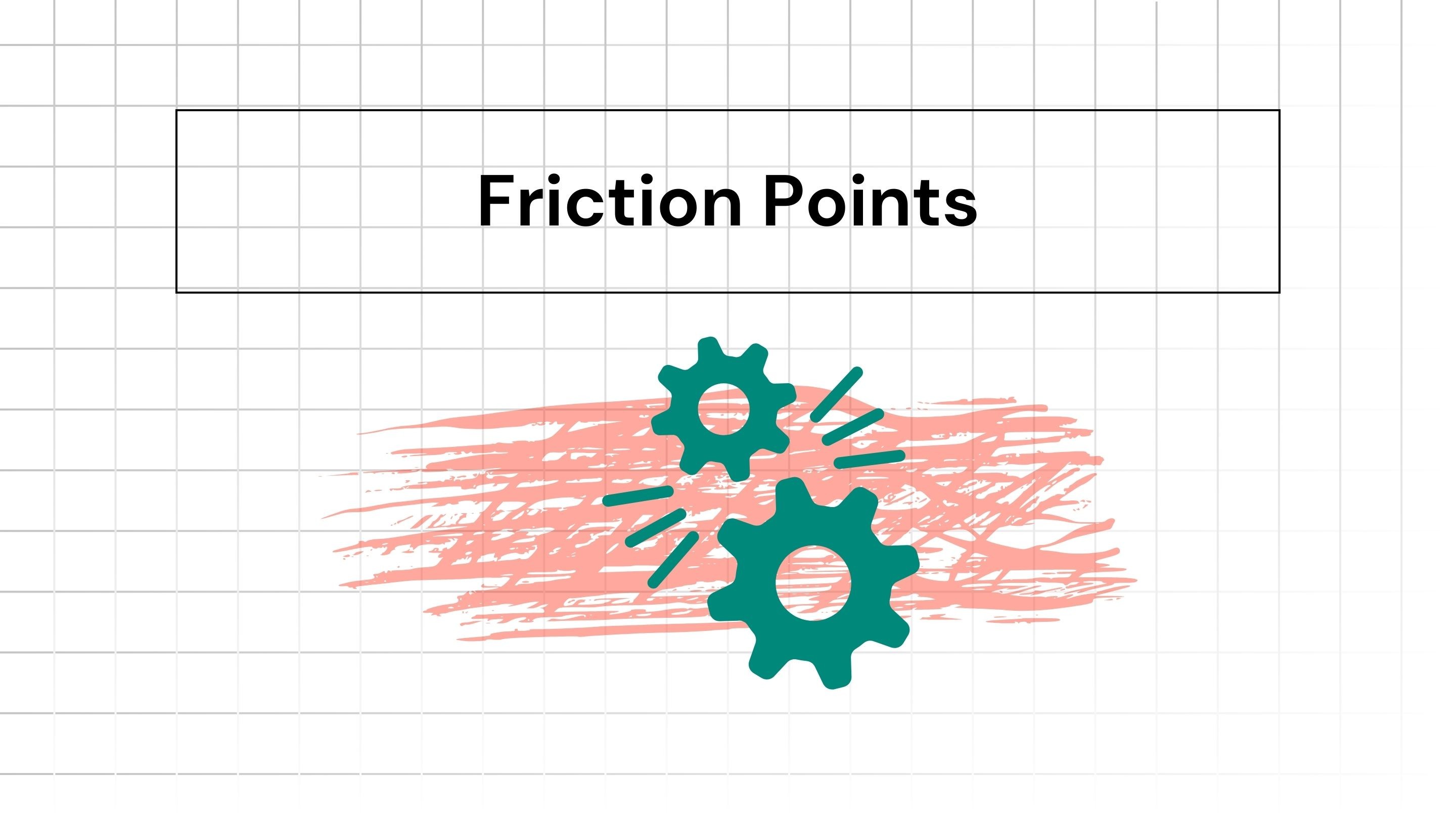
Iterate AI
Jan 1, 2025
When users interact with a product app, their experience is defined by how effortlessly they can achieve their goals. Friction points are those moments where users encounter obstacles, confusion, or delays that hinder their progress. Addressing these friction points is needed for users to effortlessly achieve their goals.
In this blog, we will dive into what friction points are, how to identify them, and strategies to resolve them effectively.
What Are Friction Points?
Friction points refer to barriers or pain points that disrupt a seamless user experience within an app. These can manifest in various forms, such as:
Complex onboarding: Lengthy registration processes or unclear instructions that deter new users from getting started. Simplify sign-up processes with minimal fields and social login options. Provide visual cues, like progress indicators or confirmation messages, to guide users.
Poor navigation: Unintuitive menus or a lack of clear pathways to important features. Implement a clean, intuitive layout with clear labels and breadcrumbs. Add a search bar for quick access to features or content.
Slow performance: Laggy app performance or delayed load times that frustrate users. Optimize app loading times by compressing images and caching data.
Overwhelming choices: Presenting too many options without guidance, leading to decision fatigue. Leverage user data to tailor experiences, such as recommended actions or curated content.
Technical bugs: Crashes, broken features, or errors that interrupt the user’s journey. Regularly test and update the app to fix bugs and improve stability.
Unclear feedback: A lack of confirmation or guidance after user actions, leaving them uncertain about the next steps. Embed feedback forms or satisfaction ratings directly into the app. Use in-app notifications to inform users of updates or resolved issues.
Identifying Friction Points
To address friction points, you first need to identify them. Here’s how:
User feedback
Gather insights through reviews, surveys, or customer support tickets. Users often directly voice their frustrations, pointing out areas that need attention or improvement.
Behavioral analytics
Dive into key metrics such as drop-off rates, session duration, click paths, and heatmaps. These tools help identify bottlenecks or confusing interactions.
Usability testing
Organize structured usability tests with diverse user groups. Observe their behavior to uncover subtle but impactful friction points that may not show up in metrics.
Competitor benchmarking
Study competing apps to learn from their successes and shortcomings. Note what they do better in terms of navigation, onboarding, or performance.
A/B Testing
Implement small, controlled changes to your app’s interface or functionality. Monitor user behavior to determine which variations effectively reduce friction.
The Role of Design and Iteration
Design plays a pivotal role in eliminating friction points. A user-centric approach ensures the app’s interface is intuitive and visually appealing. However, addressing friction is not a one-time effort—it requires continuous iteration based on evolving user needs and feedback.
Frequent updates, transparent communication with users, and a commitment to improving the experience are key to long-term success.
Set Up Analytics Without Coding and Find Friction Points
You don't need to code anymore to set up analytics. Iterate AI does it for you—planning events, instrumentation and dashboards with just click action and no coding. You can also automate it for all your feature releases as well. Schedule a demo to see how product managers reduce 80% of the time spent on analytics set up with Iterate AI.
